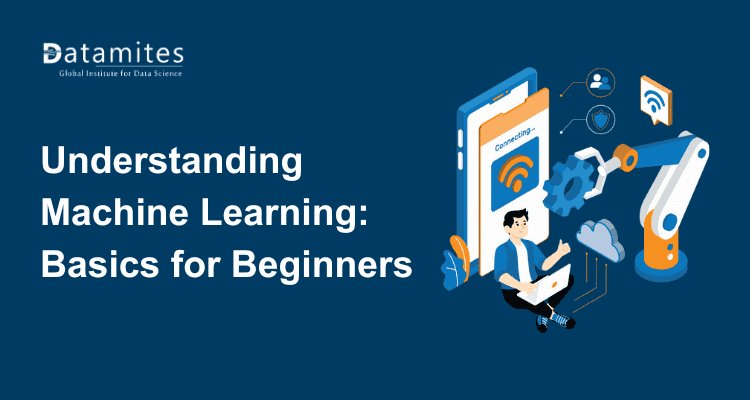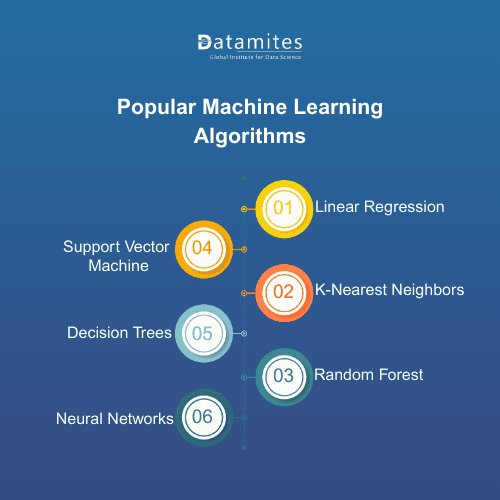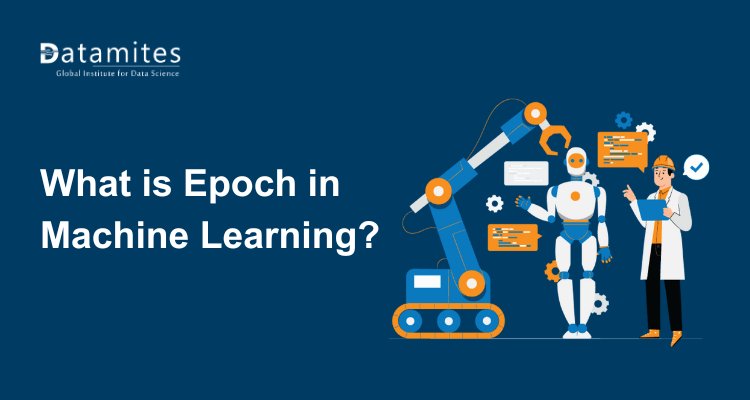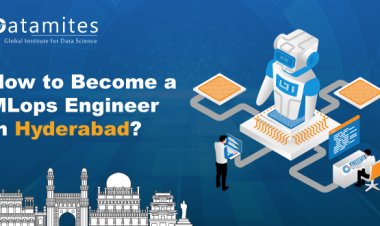Understanding Machine Learning: Basics for Beginners
Machine learning is transforming industries by enabling computers to learn from data and make intelligent decisions. This beginner-friendly guide covers the basics, key algorithms, and essential tools to help you get started. Explore how machine learning powers real-world applications and future trends in AI.

Machine learning is transforming the way we interact with technology, making systems smarter and more efficient. From self-driving cars to personalized recommendations on streaming platforms, machine learning powers many of the innovations we use daily. But how does it work? Simply put, machine learning enables computers to learn from data and make decisions with minimal human intervention.
Whether you're curious about artificial intelligence or want to start a career in tech, understanding machine learning is essential. This guide will walk you through the basics of machine learning, making it easier for beginners to grasp key concepts and applications.
What is Machine Learning?
Machine learning is a branch of AI that allows computers to improve their performance by learning from data rather than following fixed rules. This makes it widely useful in areas like email spam detection, recommendation systems, and self-driving technology.
Why Does It Matter?
- It helps automate decision-making.
- Enhances efficiency across industries like healthcare, finance, and marketing.
- Powers AI applications that improve everyday experiences.
The global machine learning market was valued at $36.73 billion in 2022 and is projected to grow at a CAGR of 34.8% between 2023 and 2030 (Grand View Research). This rapid growth highlights the increasing demand for machine learning expertise.
Types of Machine Learning
Understanding machine learning is essential for anyone looking to explore artificial intelligence and data science. Machine learning enables computers to learn from data and make predictions or decisions without being explicitly programmed. It plays a crucial role in various industries, from healthcare and finance to marketing and robotics.
For those interested in machine learning for beginners, it's important to start with the basics of machine learning, which include different learning techniques used to train models. There are three main types of machine learning, each with unique approaches to training models and solving problems:
Supervised Learning
In supervised learning, the model is trained on labeled data, meaning it already knows the correct answer before making predictions. The algorithm learns by mapping inputs to the correct outputs based on past examples. For example, email spam detection, where emails are labeled as "spam" or "not spam," helping the model recognize future spam messages.
Unsupervised Learning
In unsupervised learning, the model is given data without labels and must find patterns, relationships, or structures on its own. This is useful for analyzing large datasets and discovering hidden insights. For example, customer segmentation in marketing, where the model groups customers based on behavior, such as purchasing patterns or browsing history.
Reinforcement Learning
Reinforcement learning involves an agent interacting with an environment and learning from rewards or penalties. The model continuously improves by making decisions that maximize long-term rewards. For example, training a robot to walk by rewarding it for correct movements and adjusting its actions based on feedback.
By mastering the basics of machine learning, one can develop models that improve decision-making, automate tasks, and enhance predictive capabilities. Whether using supervised, unsupervised, or reinforcement learning, understanding these approaches is crucial for advancing in the field of AI.
Read these articles:
Key Components of Machine Learning
To gain a better understanding of machine learning, it's important to know its key components. These fundamental elements form the backbone of any machine learning system and are essential for building effective models.
- Data: The foundation of machine learning, where models learn patterns from structured or unstructured data. High-quality data and preprocessing improve performance.
- Features: Key input variables that enhance learning. Proper selection and feature engineering improve accuracy while reducing complexity.
- Algorithms: Mathematical techniques for solving tasks like classification and prediction. Common choices include decision trees, neural networks, and SVMs.
- Model Training: The process of feeding data to adjust model parameters and minimize errors. Optimization methods like gradient descent enhance accuracy.
- Evaluation: Testing with unseen data using metrics like precision and recall. Cross-validation ensures reliability before real-world deployment.
For those exploring machine learning for beginners, understanding these components is crucial. By mastering the basics of machine learning, you can build simple models that analyze data, detect patterns, and make intelligent decisions. Whether you're working on classification, regression, or clustering problems, a solid grasp of the basics of machine learning will help you develop practical applications in AI and data science.
Popular Machine Learning Algorithms
Algorithms are the heart of machine learning for beginners, providing the foundation for building models that learn from data. Understanding these algorithms is crucial for applying the basics of machine learning to real-world problems. Here are some commonly used algorithms:
- Linear Regression – A fundamental algorithm used for predicting numerical values, such as house prices based on factors like location and size. It establishes a relationship between independent and dependent variables using a straight-line equation.
- Decision Trees – A tree-like model that helps in making decisions by splitting data based on conditions. It is widely used in classification and regression tasks, such as determining loan approvals based on financial history.
- Random Forest – An advanced version of decision trees that combines multiple trees to improve accuracy and reduce overfitting. It is effective in both classification and regression problems, such as fraud detection.
- Support Vector Machine (SVM) – Used for classification tasks, such as identifying spam emails. It finds the optimal boundary between different categories by mapping data points into higher dimensions.
- K-Nearest Neighbors (KNN) – A simple yet powerful algorithm that classifies data based on the closest neighbors. It is useful in recommendation systems and pattern recognition tasks, making it a key part of the basics of machine learning.
- Neural Networks – The foundation of deep learning, inspired by the human brain. These networks are used in complex tasks like image and speech recognition, making them essential for modern AI applications.
By understanding machine learning and mastering these algorithms, one can effectively analyze data, detect patterns, and build intelligent systems. Learning the basics of machine learning helps in applying these techniques to various industries, from healthcare to finance and beyond.

Tools & Libraries for Beginners
If you’re just starting with machine learning for beginners, having the right tools and libraries is essential for building and experimenting with models. These tools simplify the learning process and help in implementing machine learning techniques efficiently. Some of the most popular ones include:
- Python: The most widely used programming language for understanding machine learning.
- Scikit-learn: A beginner-friendly library for implementing machine learning models.
- TensorFlow: A powerful library for deep learning and advanced applications.
- PyTorch: Another deep learning library that is widely used in research.
- Pandas & NumPy: Essential libraries for handling, analyzing, and manipulating data. Pandas simplifies data preprocessing, while NumPy enables efficient numerical computations, both of which are crucial for implementing the basics of machine learning.
These tools enable beginners to explore, analyze data, and effortlessly create real-world machine learning models. By mastering them, you can apply fundamental machine learning concepts to practical projects and boost your expertise in AI and data science.
Refer these articles:
Future Trends in Machine Learning
Machine learning is constantly evolving, shaping industries and transforming the way we interact with technology. Staying updated with the latest trends helps in understanding machine learning better and applying it effectively. Some key trends shaping the future include:
- Automated Machine Learning: Empowers non-experts to create models with minimal coding by automating model selection, tuning, and feature engineering, simplifying the fundamentals of machine learning.
- Explainable AI: Enhances transparency in complex models, helping users trust AI-driven decisions in fields like finance and healthcare.
- AI in Healthcare: Improves diagnoses, personalized treatments, and drug discovery, detecting diseases early and enhancing patient care with predictive analytics.
- Ethical AI: Ensures fairness, transparency, and bias-free decision-making, promoting responsible AI in hiring, lending, and law enforcement.
By keeping up with these advancements, you can stay ahead in the field and strengthen your expertise in machine learning for beginners. Understanding these trends will help you apply the basics of machine learning to solve real-world problems and contribute to the future of AI.
The U.S. Bureau of Labor Statistics reports that market research analysts earned a median salary of $74,680 in 2023. With 903,400 jobs in the field, employment is expected to grow 8% by 2033, adding 74,900 new positions. The rising need for consumer insights and market analysis is expected to create strong job opportunities for market research analysts in the coming years.
In short, machine learning is revolutionizing industries, creating vast career opportunities. Gaining hands-on experience through real-world projects and expert-led training is key to success. Enrolling in a reputable institute with industry-recognized certifications can give you a competitive edge. With AI advancing rapidly, now is the perfect time to start your journey in machine learning.
With AI revolutionizing industries, the demand for skilled professionals is skyrocketing. If you're looking for an Artificial Intelligence course in Bangalore, you’ll find excellent learning opportunities that provide hands-on, classroom-based training. Many top institutes in cities like Chennai, Ahmedabad, Coimbatore, Hyderabad, Pune, Mumbai, Kochi, Delhi, and Kolkata also offer AI programs designed to help learners master machine learning and AI concepts.
A solid AI education goes beyond theory—it requires practical application. The best courses focus on real-world projects, ensuring that students develop job-ready skills and the confidence to work in AI-driven roles.
One of the leading institutes in this field is DataMites, a premier artificial intelligence training institute in India. DataMites offers comprehensive machine learning courses designed to equip learners with industry-relevant skills and globally recognized certifications from IABAC and NASSCOM FutureSkills.
At DataMites Institute, students gain hands-on experience through real-world projects, expert mentorship, and internship opportunities. The institute offers 24/7 access to practice labs, ensuring continuous learning, along with placement support to help start successful careers in AI and machine learning.
The Artificial Intelligence course at DataMites combines expert-led training with real-world projects, ensuring hands-on learning and job-ready skills. Available at offline artificial intelligence courses in Pune, Coimbatore, Bangalore, Chennai, Hyderabad, Mumbai, and Ahmedabad, as well as online, DataMites equips professionals with the expertise needed to excel in the rapidly growing AI and machine learning industry.





